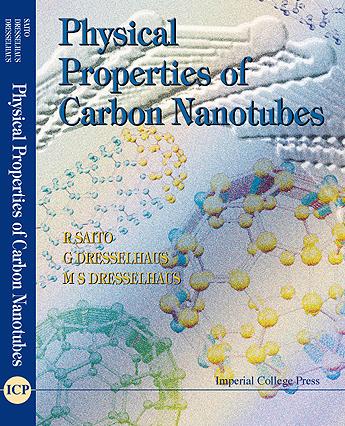 "Physical Properties of Carbon Nanotubes"
"Physical Properties of Carbon Nanotubes"  "Physical Properties of Carbon Nanotubes"
"Physical Properties of Carbon Nanotubes"
See also the publisher's page. for order. Check Errata and QA
Book Review
Thank you for your buying the book. The following is statics of selling.
2007.1, 4,455 (Hard copy, 1845, Soft copy 2594, E-version 16)
2010.1, 5,374 (Hard copy, 2126, Soft copy 3248, E-version 38)
according to the publisher. Thank you.
Thank you for your buying the book, the first prints are sold out much faster than the publisher expects. Now the publisher is now printing more copies. According to the publisher, the new reprints will appear by October 1999. You can order directly the publisher now. (1999.9.20) If you urgently need a copy of the book, please inform me by e-mail with a reason. Since I have some copies in my hands, I can offer it with a reasonable price.
A carbon nanotube is a honeycomb lattice rolled into a cylinder. The nanotube diameter about 1 nm is much smaller in size than the most advanced semiconductor devices and thus carbon nanotube brings us the challenge for new solid state physics. One of the most significant physical properties of carbon nanotubes is their electronic structure which depends only on their geometry, and is unique to solid state physics. Specifically, the electronic structure of a single-wall carbon nanotube is either metallic or semiconducting, depending on its diameter and chirality, and does not requiring any doping. Further, the energy gap of semiconducting carbon nanotubes can be varied continuously from 1~eV to 0~eV, by varying the nanotube diameter. Thus we can imagine that the smallest possible semiconductor devices are likely to be based on carbon nanotubes.
Physical Properties of Carbon Nanotubes is an introductory textbook for the graduate students and researchers who start to learn carbon nanotubes from many fields of science. Although progress in the field is still at an early stage, the book focuses on the basic principles behind the physical properties. Some computational source codes which generate coordinates of carbon nanotube are included in the textbook which will be useful to start the research.
Any other important information on nanotube is avairable in The Nanotube Site by Professor David Tomanek.